Near-Wall Settling Behavior of a Particle in Stratified Fluids
Abstract
:1. Introduction
2. Experimental Design
3. Results and Discussion
3.1. Force Analysis
3.2. Tail and Particle Trajectory
3.3. Velocity
4. Conclusions
Author Contributions
Funding
Institutional Review Board Statement
Informed Consent Statement
Data Availability Statement
Conflicts of Interest
References
- Bernstein, D.M. A review of the influence of particle size, puff volume, and inhalation pattern on the deposition of cigarette smoke particles in the respiratory tract. Inhal. Toxicol. 2004, 16, 675–689. [Google Scholar] [CrossRef]
- Kuehl, S.A.; Nittrouer, C.A.; Allison, M.A.; Faria, L.E.C.; Dukat, D.A.; Jaeger, J.M.; Pacioni, T.D.; Figueiredo, A.G.; Underkoffler, E.C. Sediment deposition, accumulation, and seabed dynamics in an energetic fine-grained coastal environment. Cont. Shelf Res. 1996, 16, 787–815. [Google Scholar] [CrossRef]
- Leslie, H.A.; Van Velzen, M.J.; Brandsma, S.H.; Vethaak, A.D.; Garcia-Vallejo, J.J.; Lamoree, M.H. Discovery and quantification of plastic particle pollution in human blood. Environ. Int. 2022, 163, 107199. [Google Scholar] [CrossRef] [PubMed]
- Fernando, H.; Lee, S.; Anderson, J.; Princevac, M.; Pardyjak, E.; Grossman-Clarke, S. Urban fluid mechanics: Air circulation and contaminant dispersion in cities. Environ. Fluid Mech. 2001, 1, 107–164. [Google Scholar] [CrossRef]
- Horowitz, M.; Williamson, C. The effect of Reynolds number on the dynamics and wakes of freely rising and falling spheres. J. Fluid Mech. 2010, 651, 251–294. [Google Scholar] [CrossRef]
- Magnaudet, J. The forces acting on bubbles and rigid particles. In Proceedings of the ASME Fluids Engineering Division Summer Meeting, FEDSM, Toronto, ON, Canada, 3–5 August 2022; pp. 22–26. [Google Scholar]
- Zenit, R.; Feng, J. Hydrodynamic interactions among bubbles, drops, and particles in non-Newtonian liquids. Annu. Rev. Fluid Mech. 2018, 50, 505–534. [Google Scholar] [CrossRef]
- Jenny, M.; Dušek, J.; Bouchet, G. Instabilities and transition of a sphere falling or ascending freely in a Newtonian fluid. J. Fluid Mech. 2004, 508, 201–239. [Google Scholar] [CrossRef]
- Xia, Z.; Connington, K.W.; Rapaka, S.; Yue, P.; Feng, J.J.; Chen, S. Flow patterns in the sedimentation of an elliptical particle. J. Fluid Mech. 2009, 625, 249–272. [Google Scholar] [CrossRef] [Green Version]
- Magnaudet, J.; Mercier, M.J. Particles, drops, and bubbles moving across sharp interfaces and stratified layers. Annu. Rev. Fluid Mech. 2020, 52, 61–91. [Google Scholar] [CrossRef] [Green Version]
- Maru, H.; Wasan, D.; Kintner, R. Behavior of a rigid sphere at a liquid—Liquid interface. Chem. Eng. Sci. 1971, 26, 1615–1628. [Google Scholar] [CrossRef]
- Smith, P.; Van de Ven, T. The effect of gravity on the drainage of a thin liquid film between a solid sphere and a liquid/fluid interface. J. Colloid Interface Sci. 1984, 100, 456–464. [Google Scholar] [CrossRef]
- Jones, A.; Wilson, S. The film drainage problem in droplet coalescence. J. Fluid Mech. 1978, 87, 263–288. [Google Scholar] [CrossRef]
- Pierson, J.-L.; Magnaudet, J. Inertial settling of a sphere through an interface. Part 2. Sphere and tail dynamics. J. Fluid Mech. 2018, 835, 808–851. [Google Scholar] [CrossRef] [Green Version]
- Dietrich, N.; Poncin, S.; Li, H.Z. Dynamical deformation of a flat liquid–liquid interface. Exp. Fluids 2011, 50, 1293–1303. [Google Scholar] [CrossRef]
- Pierson, J.-L.; Magnaudet, J. Inertial settling of a sphere through an interface. Part 1. From sphere flotation to wake fragmentation. J. Fluid Mech. 2018, 835, 762–807. [Google Scholar] [CrossRef] [Green Version]
- Yick, K.Y.; Torres, C.R.; Peacock, T.; Stocker, R. Enhanced drag of a sphere settling in a stratified fluid at small Reynolds numbers. J. Fluid Mech. 2009, 632, 49–68. [Google Scholar] [CrossRef]
- Liu, Y.J.; Nelson, J.; Feng, J.; Joseph, D.D. Anomalous rolling of spheres down an inclined plane. J. Non-Newton. Fluid Mech. 1993, 50, 305–329. [Google Scholar] [CrossRef]
- Becker, L.; McKinley, G.; Stone, H. Sedimentation of a sphere near a plane wall: Weak non-Newtonian and inertial effects. J. Non-Newton. Fluid Mech. 1996, 63, 201–233. [Google Scholar] [CrossRef]
- Singh, P.; Joseph, D. Sedimentation of a sphere near a vertical wall in an Oldroyd-B fluid. J. Non-Newton. Fluid Mech. 2000, 94, 179–203. [Google Scholar] [CrossRef]
- Tanner, R. End effects in falling-ball viscometry. J. Fluid Mech. 1963, 17, 161–170. [Google Scholar] [CrossRef]
- Goldman, A.J.; Cox, R.G.; Brenner, H. Slow viscous motion of a sphere parallel to a plane wall—I Motion through a quiescent fluid. Chem. Eng. Sci. 1967, 22, 637–651. [Google Scholar] [CrossRef]
- Joseph, D.; Nelson, J.; Hu, H.; Liu, Y. Competition between inertial pressures and normal stresses in the flow induced anisotropy of solid particles. Theor. Appl. Rheol. 1992, 1, 60–65. [Google Scholar]
- HARRISON, G.M.; LAWSON, N.J.; Boger, D. The measurement of the flow around a sphere settling in a rectangular box using 3-dimensional particle image velocimetry. Chem. Eng. Commun. 2001, 188, 143–178. [Google Scholar] [CrossRef]
- Harrison, G.M.; Tatum, J.A.; Lawson, N.J. A Study of the Sedimentation of a Sphere Near a Vertical Wall Using Three-Dimensional PIV. In Proceedings of the Heat Transfer Summer Conference, Charlotte, NC, USA, 11–15 July 2004; 2004; pp. 619–623. [Google Scholar]
- Tatum, J.A.; Finnis, M.V.; Lawson, N.J.; Harrison, G.M. 3-D particle image velocimetry of the flow field around a sphere sedimenting near a wall: Part 2. Effects of distance from the wall. J. Non-Newton. Fluid Mech. 2005, 127, 95–106. [Google Scholar] [CrossRef]
- Yang, S.; Tu, C.; Dai, M.; Ge, X.; Xu, R.; Gao, X.; Bao, F. Sedimentation of Two Side-by-Side Heavy Particles of Different Density in a Shear-Thinning Fluid with Viscoelastic Properties. Appl. Sci. 2021, 11, 7113. [Google Scholar] [CrossRef]
- Lockyer, M.; Davies, J.; Jones, T. The importance of rheology in the determination of the carrying capacity of oil-drilling fluids. In Rheology; Springer: Berlin/Heidelberg, Germany, 1980; pp. 127–132. [Google Scholar]
- Reynolds, P.; Jones, T. An experimental study of the settling velocities of single particles in non-Newtonian fluids. Int. J. Miner. Process. 1989, 25, 47–77. [Google Scholar] [CrossRef]
- Acharya, A.; Mashelkar, R.; Ulbrecht, J. Flow of inelastic and viscoelastic fluids past a sphere. Rheol. Acta 1976, 15, 454–470. [Google Scholar] [CrossRef]
- Mansoor, M.M.; Vakarelski, I.U.; Marston, J.; Truscott, T.T.; Thoroddsen, S.T. Stable–streamlined and helical cavities following the impact of Leidenfrost spheres. J. Fluid Mech. 2017, 823, 716–754. [Google Scholar] [CrossRef] [Green Version]
- Vakarelski, I.U.; Jetly, A.; Thoroddsen, S.T. Stable-streamlined cavities following the impact of non-superhydrophobic spheres on water. Soft Matter 2019, 15, 6278–6287. [Google Scholar] [CrossRef] [Green Version]
- Takemura, F. Migration velocities of spherical solid particles near a vertical wall for Reynolds number from 0.1 to 5. Phys. Fluids 2004, 16, 204–207. [Google Scholar] [CrossRef]
- Jeong, H.; Park, H. Near-wall rising behaviour of a deformable bubble at high Reynolds number. J. Fluid Mech. 2015, 771, 564–594. [Google Scholar] [CrossRef]
- Małysa, K.; Van De Ven, T. Rotational and translational motion of a sphere parallel to a wall. Int. J. Multiph. Flow 1986, 12, 459–468. [Google Scholar] [CrossRef]
- Takemura, F.; Magnaudet, J. The transverse force on clean and contaminated bubbles rising near a vertical wall at moderate Reynolds number. J. Fluid Mech. 2003, 495, 235–253. [Google Scholar] [CrossRef]
- Luo, K.; Wang, Z.; Fan, J.; Cen, K. Full-scale solutions to particle-laden flows: Multidirect forcing and immersed boundary method. Phys. Rev. E 2007, 76, 066709. [Google Scholar] [CrossRef] [PubMed]
- Luo, K.; Wei, A.; Wang, Z.; Fan, J. Fully-resolved DNS study of rotation behaviors of one and two particles settling near a vertical wall. Powder Technol. 2013, 245, 115–125. [Google Scholar] [CrossRef]
- Yao, C.; Zhang, J.; Xue, Z.; Yu, K.; Yu, X.; Yang, X.; Qu, Q.; Gan, W.; Wang, J.; Jiang, L. Bioinspired cavity regulation on superhydrophobic spheres for drag reduction in an aqueous medium. ACS Appl. Mater. Interfaces 2021, 13, 4796–4803. [Google Scholar] [CrossRef] [PubMed]
- Veldhuis, C.H.J. Leonardo’s paradox: Path and shape instabilities of particles and bubbles. Ph.D. Thesis, University of Twente, Enschede, the Netherlands, 2007. [Google Scholar]
- Kim, S.J.; Kim, H.N.; Lee, S.J.; Sung, H.J. A lubricant-infused slip surface for drag reduction. Phys. Fluids 2020, 32, 091901. [Google Scholar] [CrossRef]

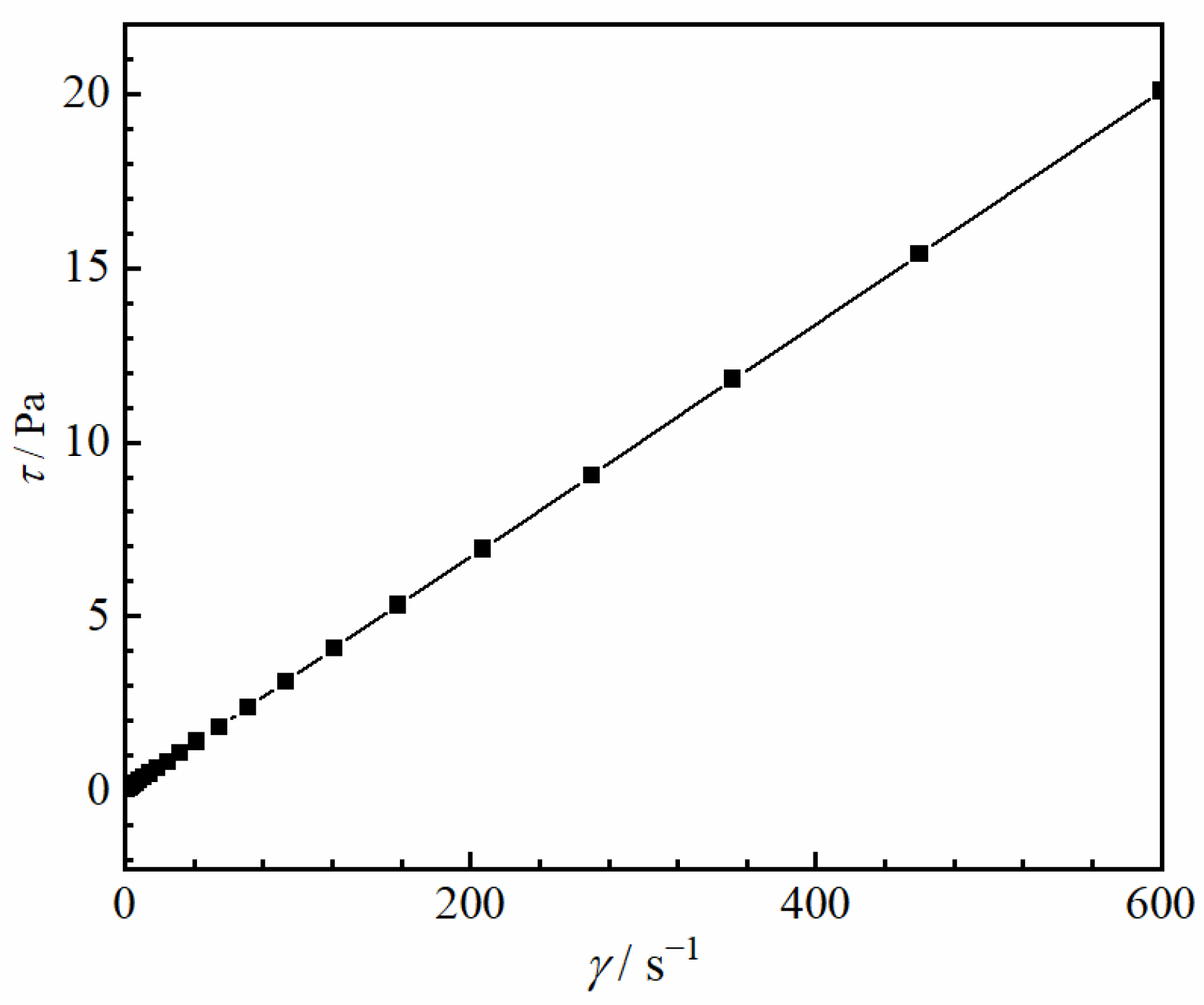
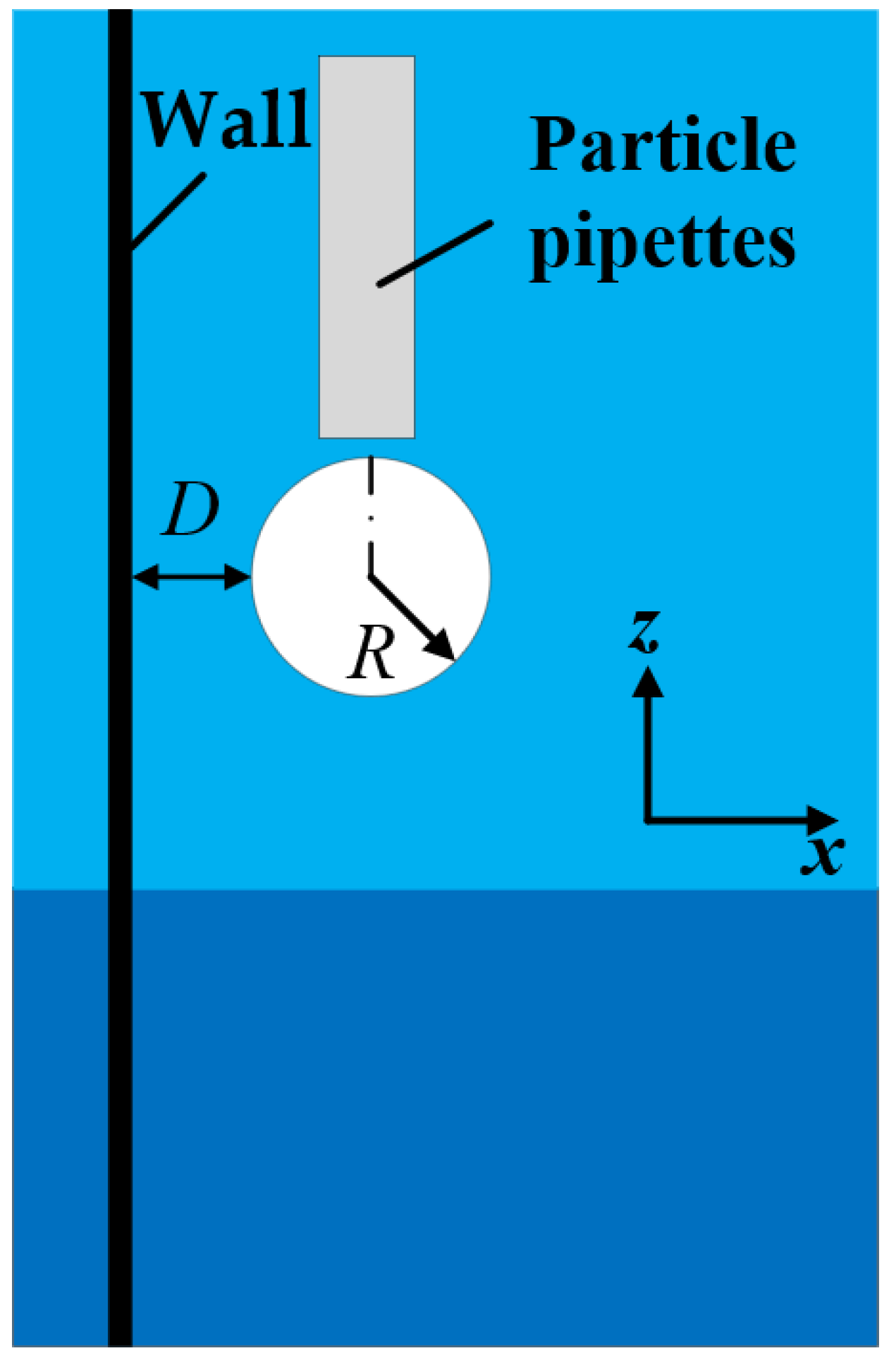
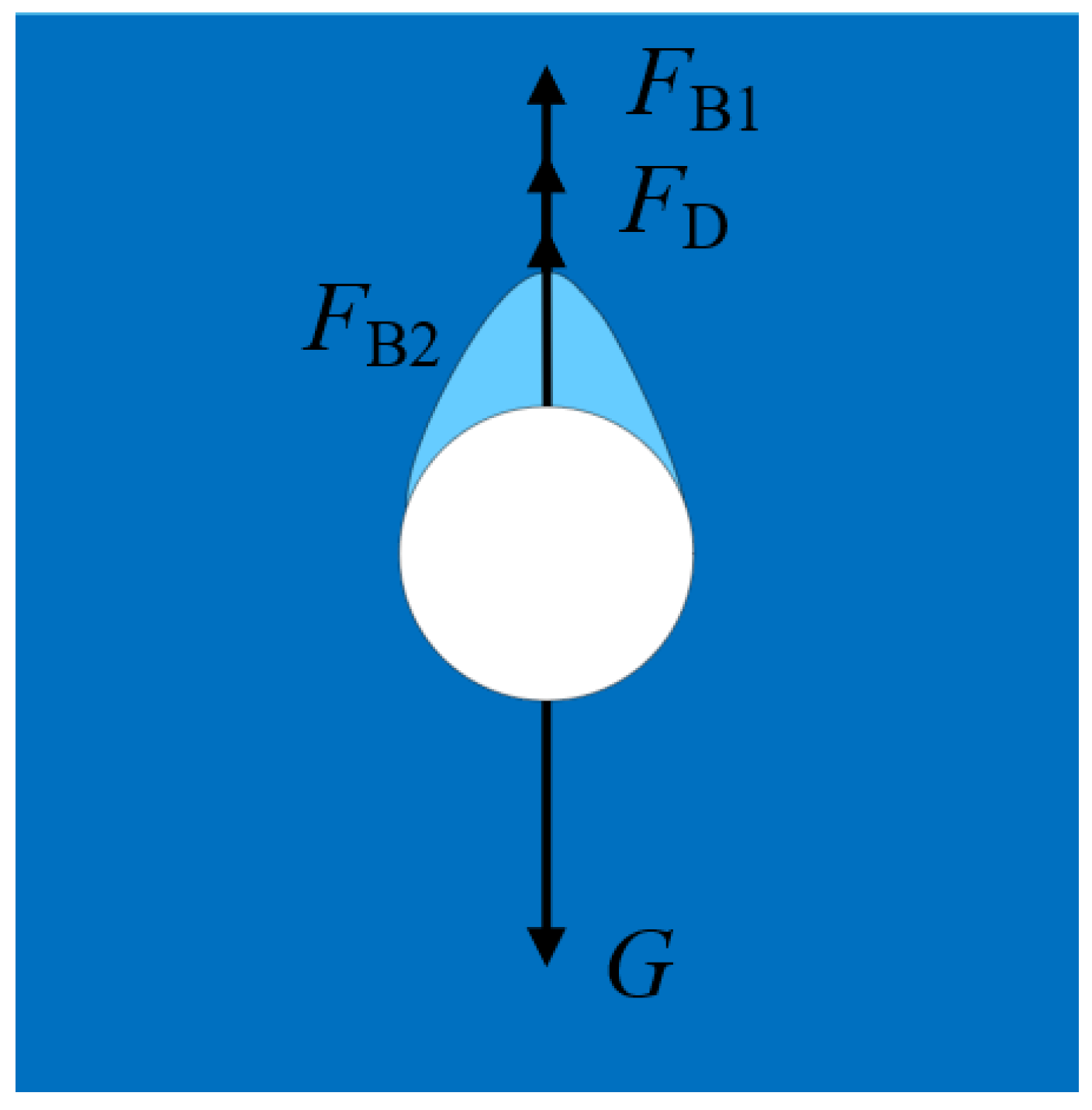
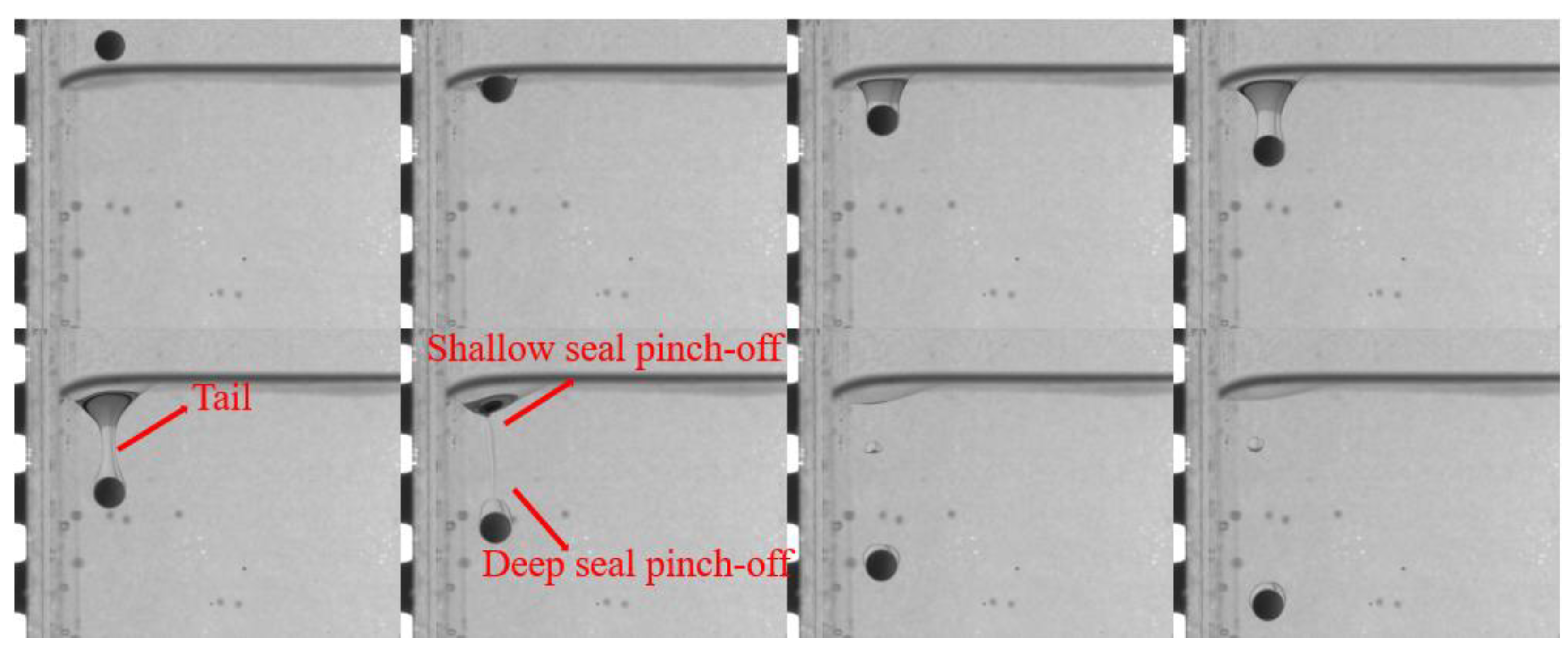

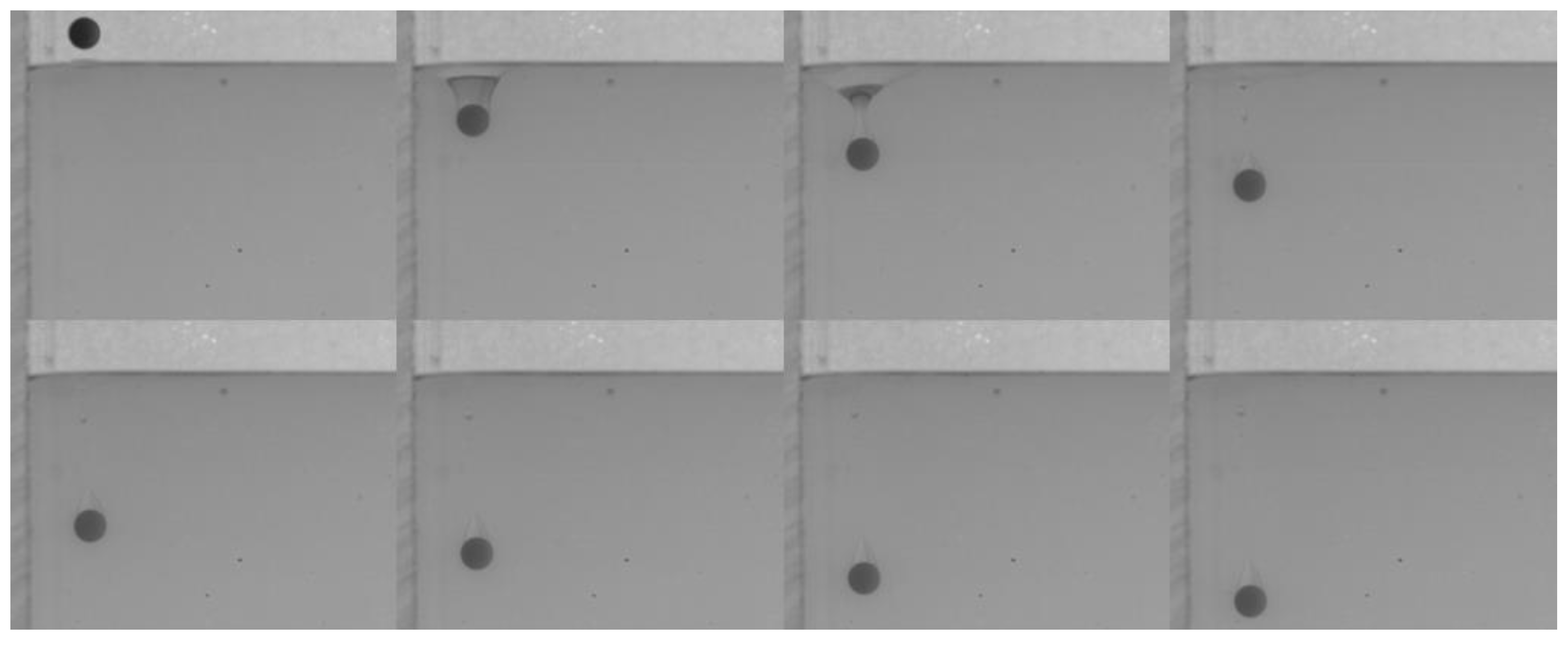
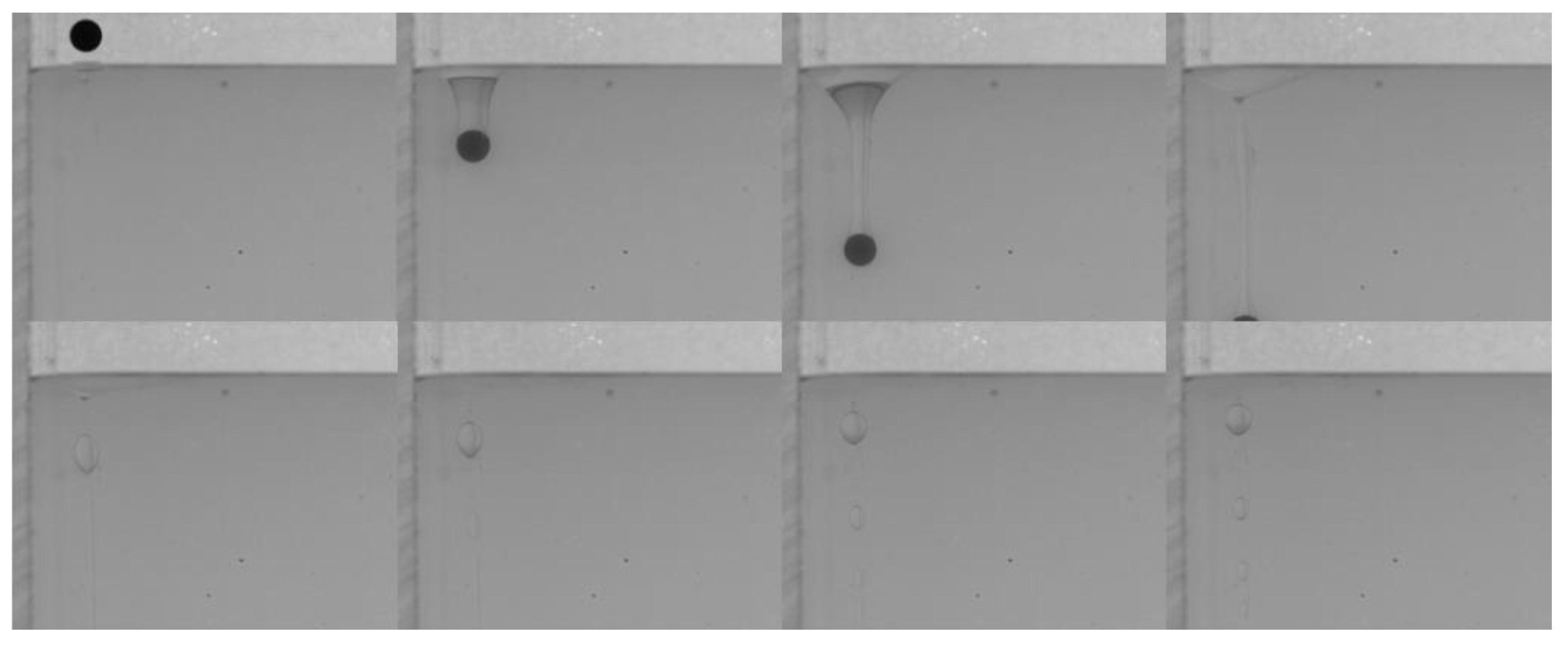
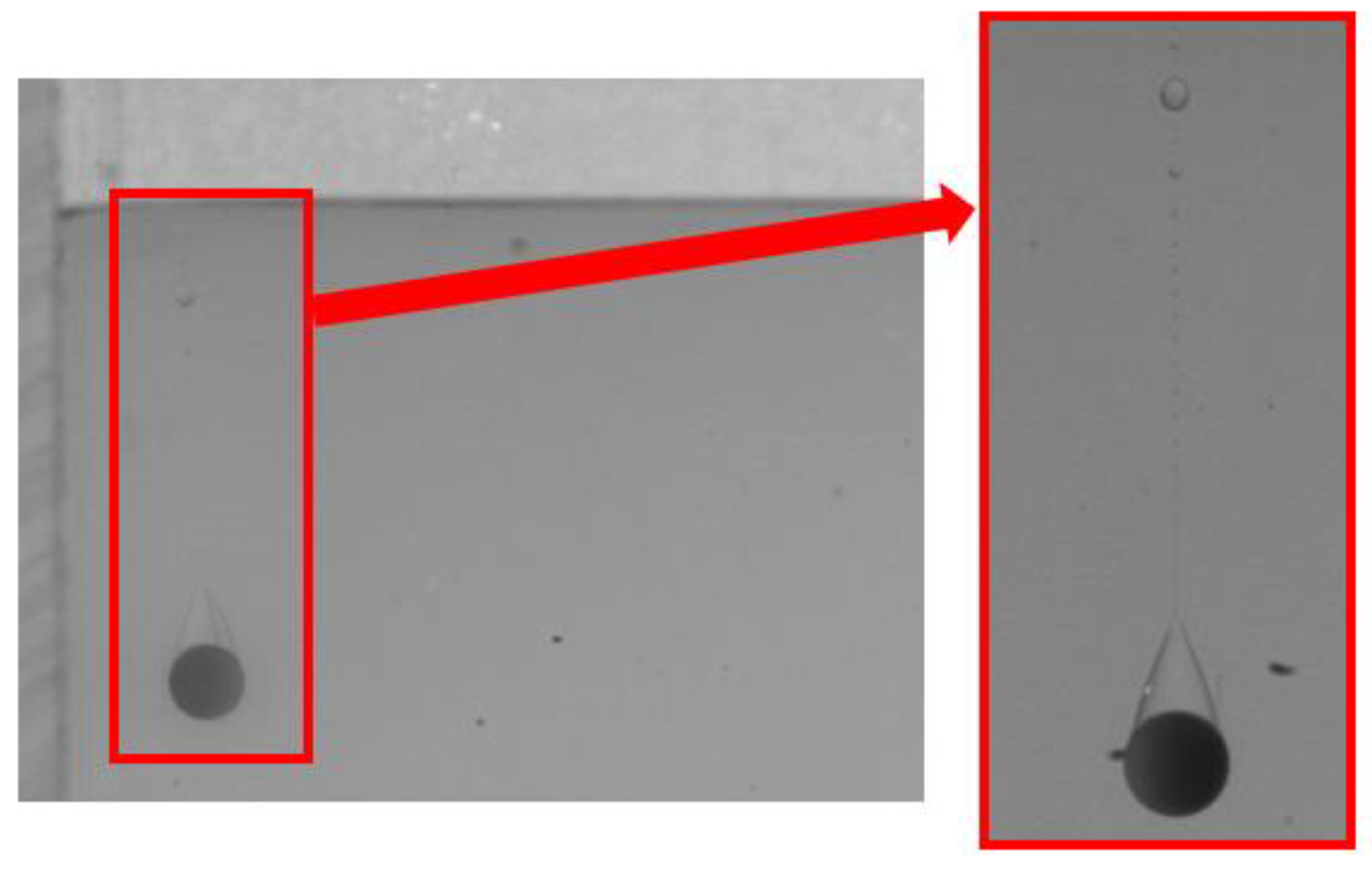
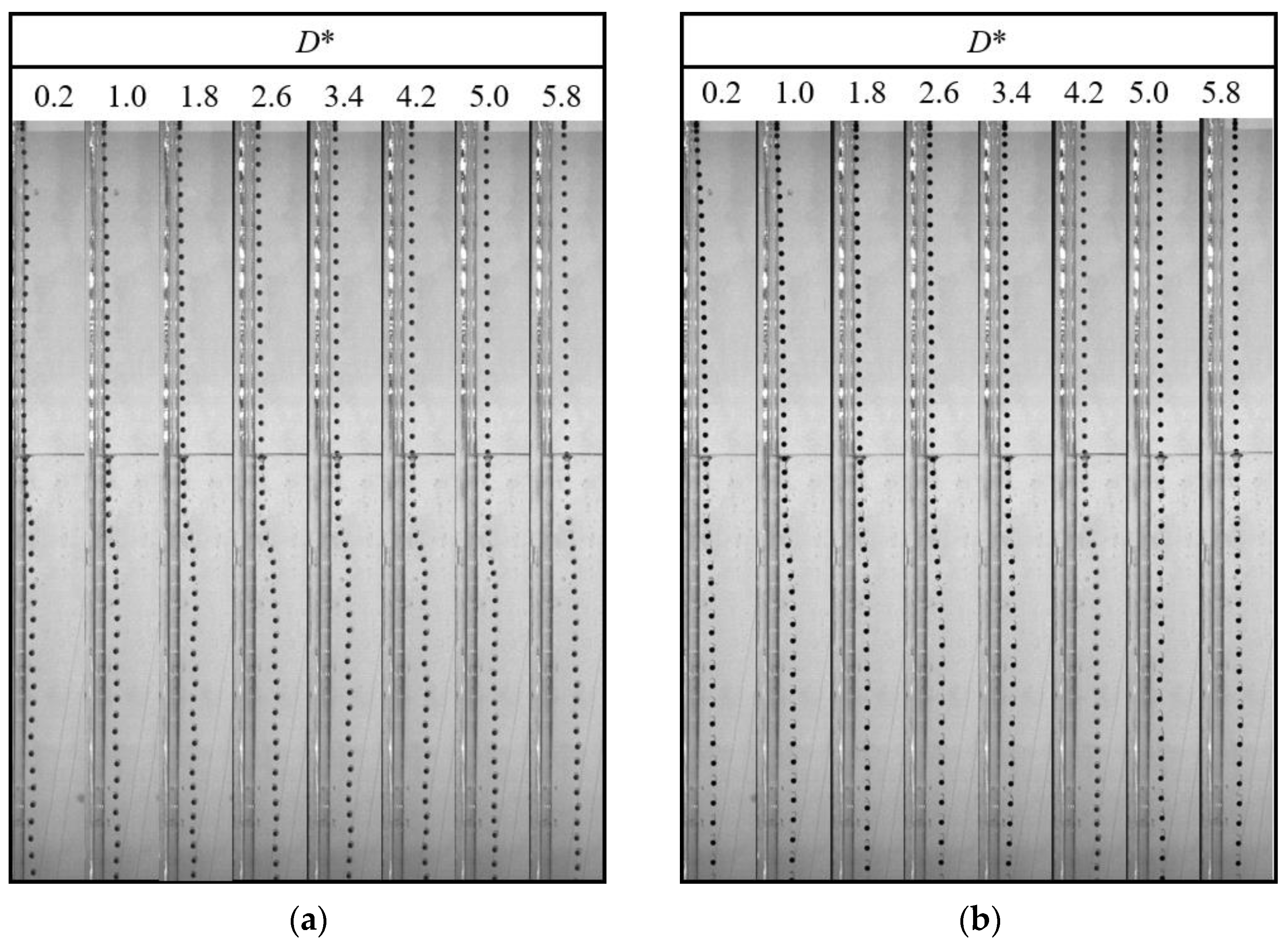

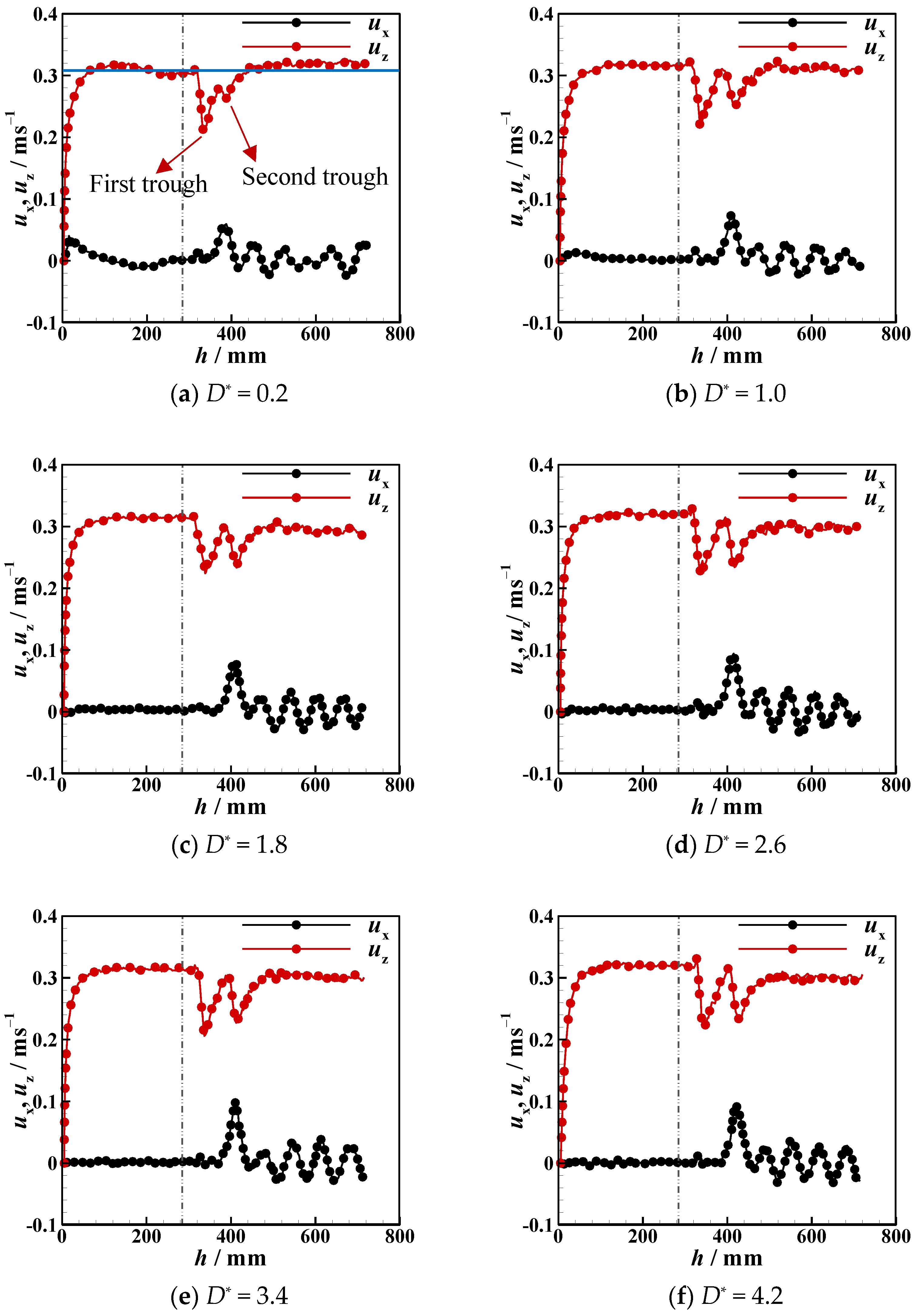

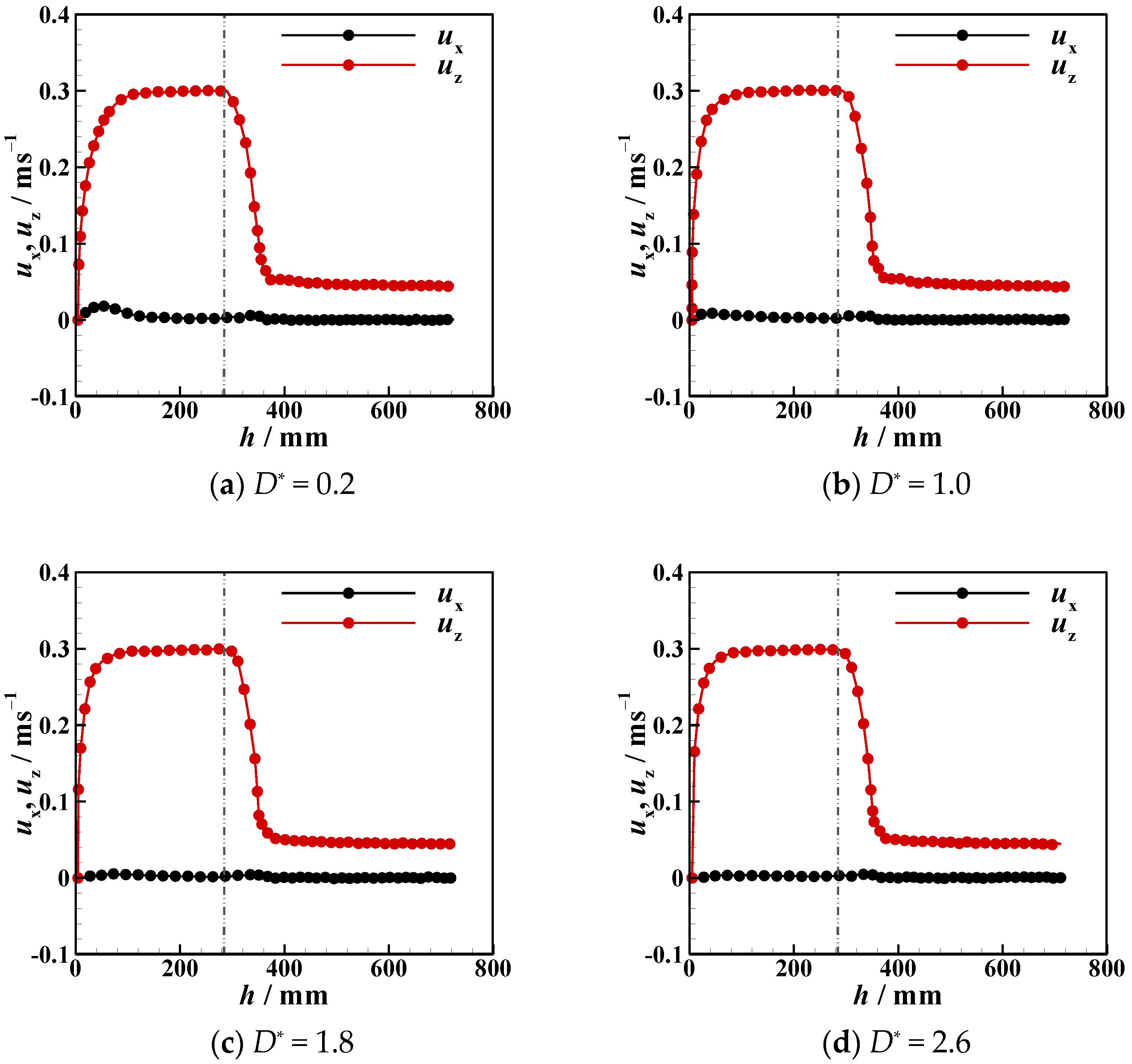
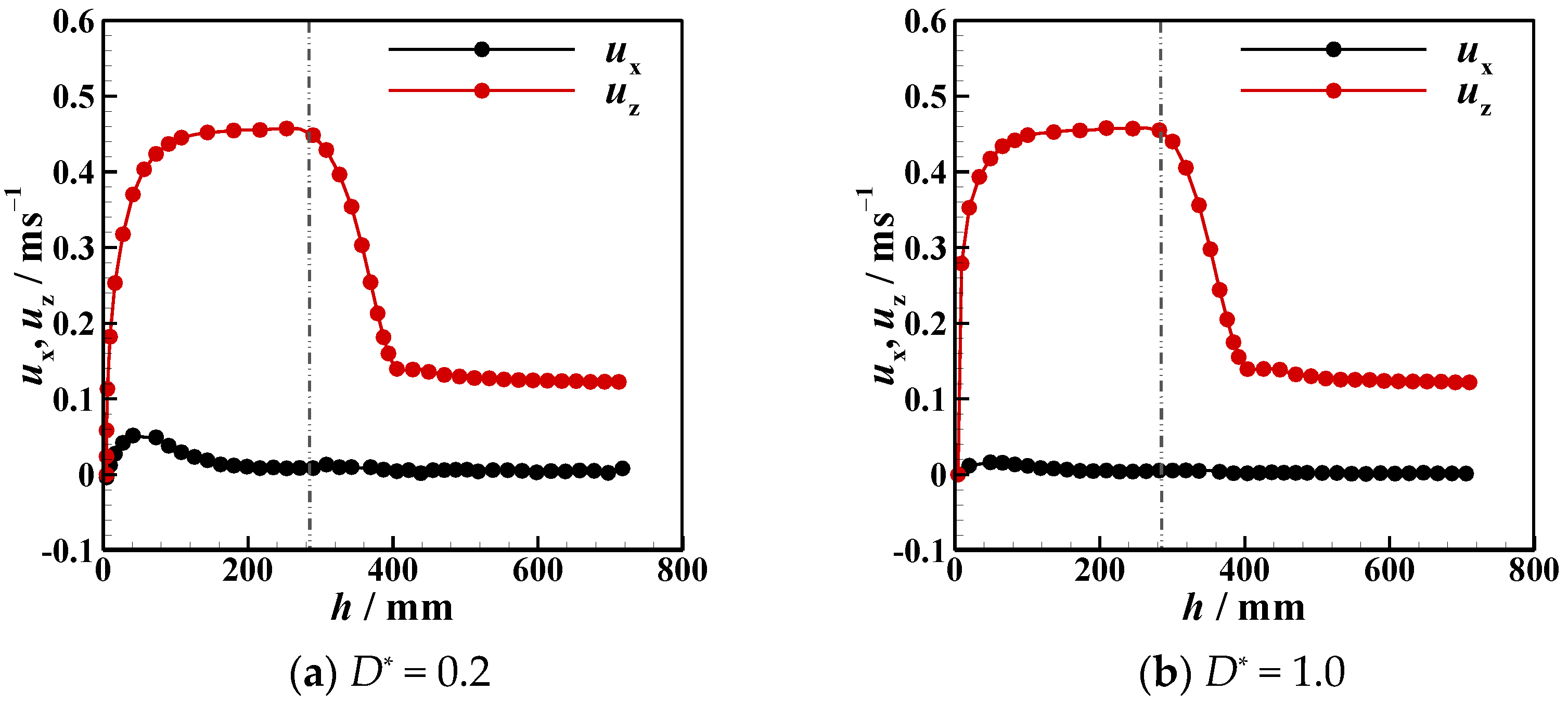
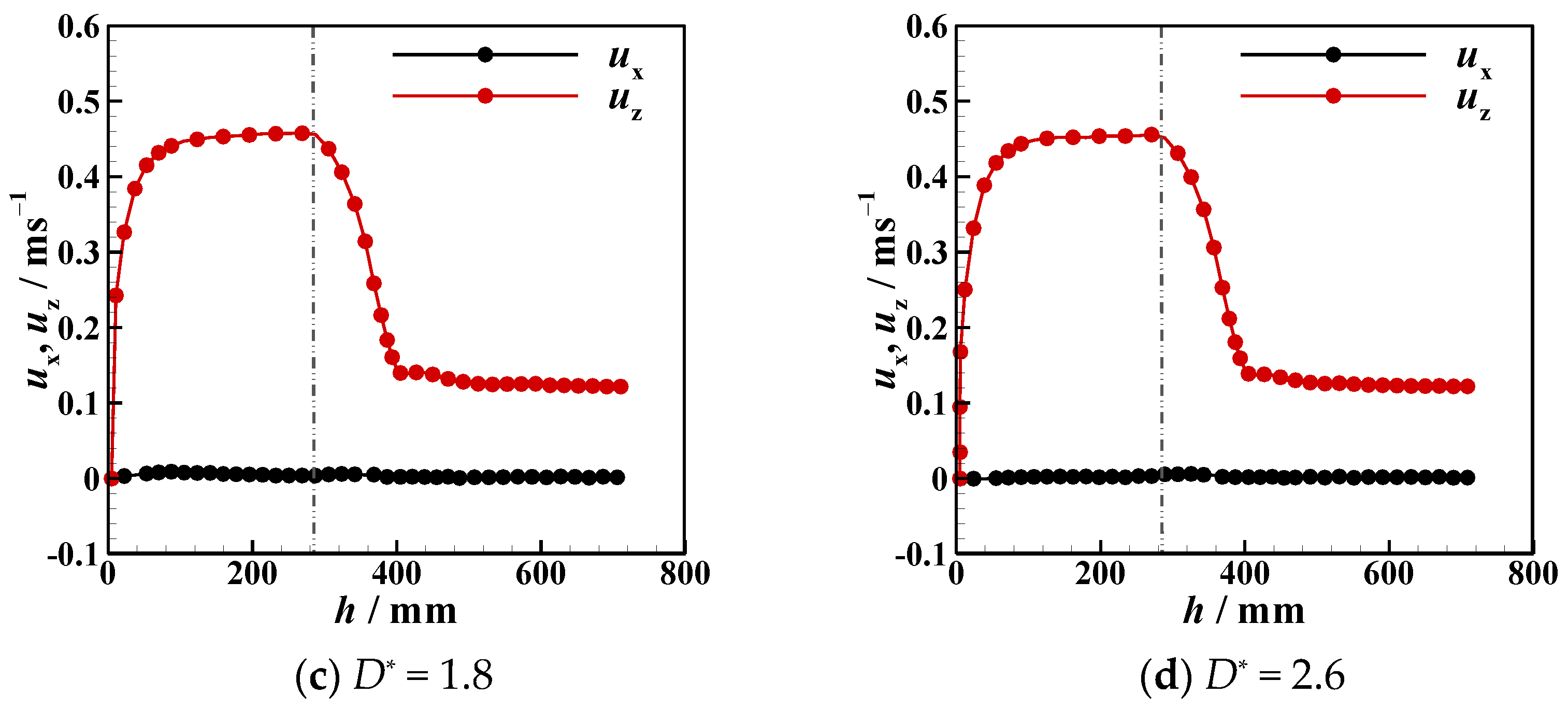
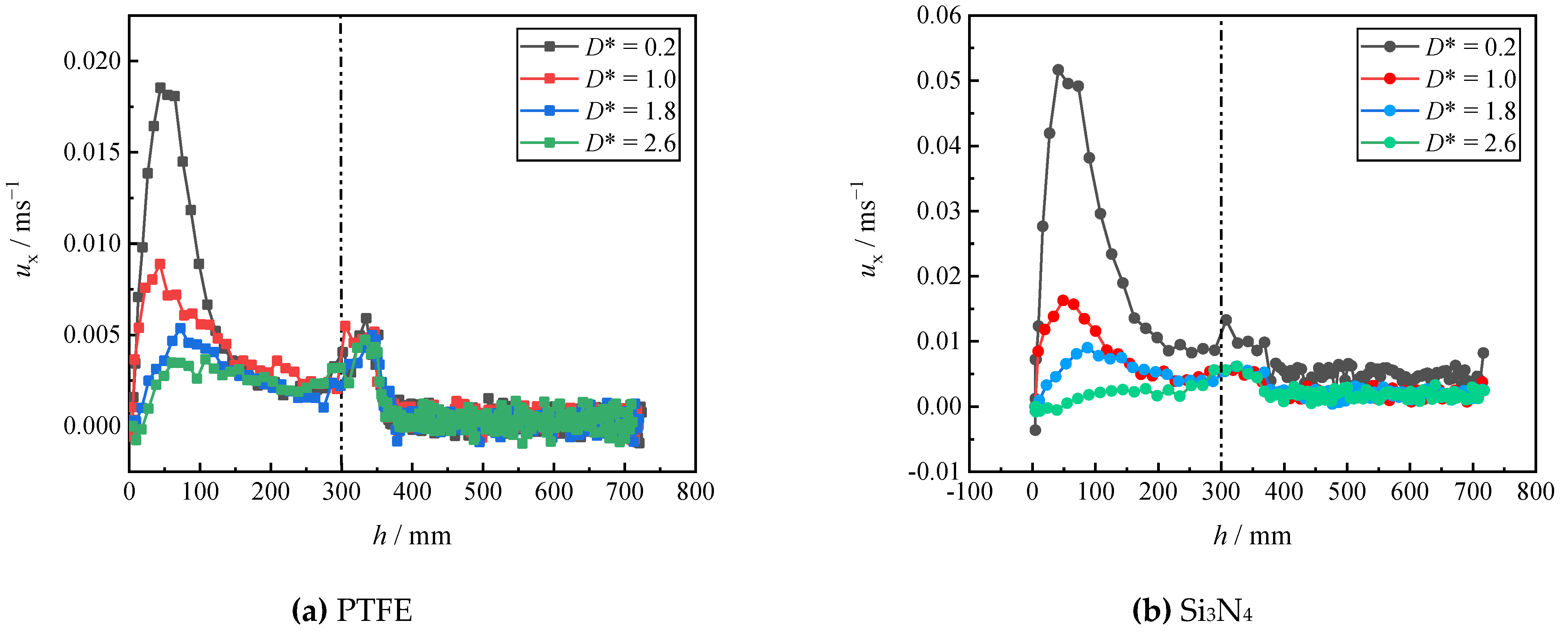
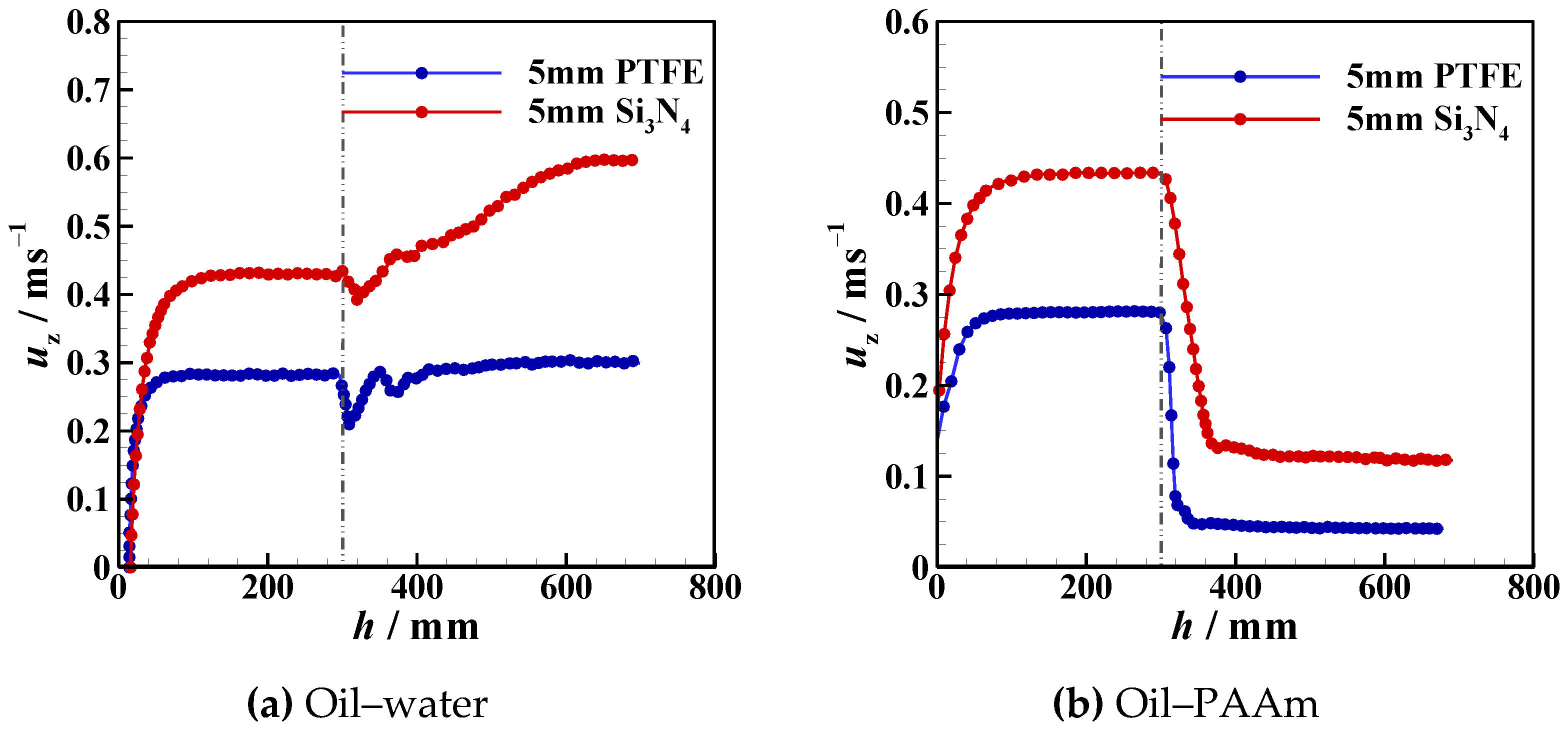
| Material | Density (kg/m3) | Diameter (mm) |
|---|---|---|
| Polytetrafluoroethylene (PTFE) | 2200 | 5.0 |
| Silicon nitride ceramics (Si3N4) | 3200 | 5.0 |
Publisher’s Note: MDPI stays neutral with regard to jurisdictional claims in published maps and institutional affiliations. |
© 2022 by the authors. Licensee MDPI, Basel, Switzerland. This article is an open access article distributed under the terms and conditions of the Creative Commons Attribution (CC BY) license (https://creativecommons.org/licenses/by/4.0/).
Share and Cite
Dai, M.; Tu, C.; Du, P.; Kuang, Z.; Shan, J.; Wang, X.; Bao, F. Near-Wall Settling Behavior of a Particle in Stratified Fluids. Micromachines 2022, 13, 2070. https://doi.org/10.3390/mi13122070
Dai M, Tu C, Du P, Kuang Z, Shan J, Wang X, Bao F. Near-Wall Settling Behavior of a Particle in Stratified Fluids. Micromachines. 2022; 13(12):2070. https://doi.org/10.3390/mi13122070
Chicago/Turabian StyleDai, Minglu, Chengxu Tu, Pengfei Du, Zhongke Kuang, Jiaming Shan, Xu Wang, and Fubing Bao. 2022. "Near-Wall Settling Behavior of a Particle in Stratified Fluids" Micromachines 13, no. 12: 2070. https://doi.org/10.3390/mi13122070






